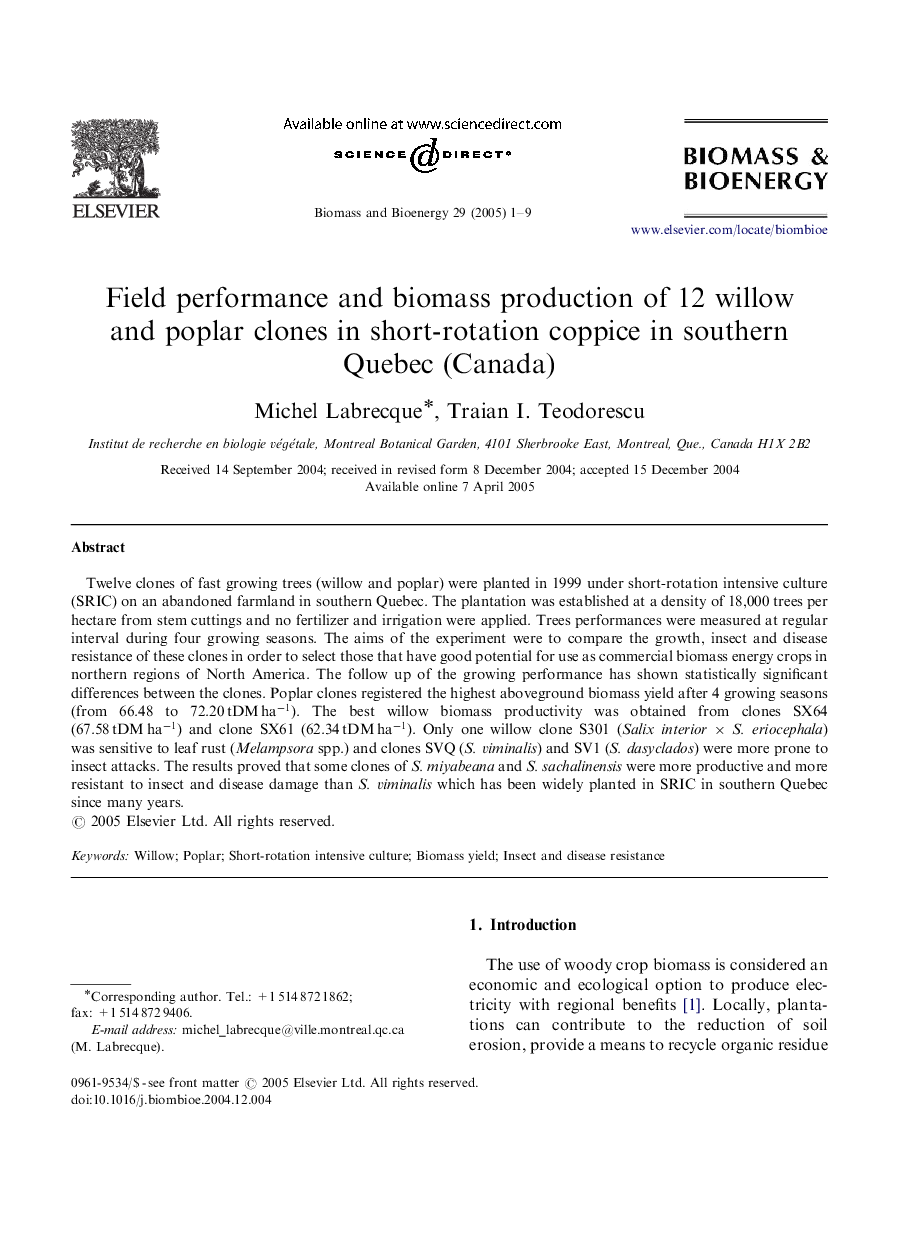| Article ID | Journal | Published Year | Pages | File Type |
|---|---|---|---|---|
| 10393847 | Biomass and Bioenergy | 2005 | 9 Pages |
Abstract
Twelve clones of fast growing trees (willow and poplar) were planted in 1999 under short-rotation intensive culture (SRIC) on an abandoned farmland in southern Quebec. The plantation was established at a density of 18,000 trees per hectare from stem cuttings and no fertilizer and irrigation were applied. Trees performances were measured at regular interval during four growing seasons. The aims of the experiment were to compare the growth, insect and disease resistance of these clones in order to select those that have good potential for use as commercial biomass energy crops in northern regions of North America. The follow up of the growing performance has shown statistically significant differences between the clones. Poplar clones registered the highest aboveground biomass yield after 4 growing seasons (from 66.48 to 72.20Â tDMÂ ha-1). The best willow biomass productivity was obtained from clones SX64 (67.58Â tDMÂ ha-1) and clone SX61 (62.34Â tDMÂ ha-1). Only one willow clone S301 (Salix interiorÃS. eriocephala) was sensitive to leaf rust (Melampsora spp.) and clones SVQ (S. viminalis) and SV1 (S. dasyclados) were more prone to insect attacks. The results proved that some clones of S. miyabeana and S. sachalinensis were more productive and more resistant to insect and disease damage than S. viminalis which has been widely planted in SRIC in southern Quebec since many years.
Related Topics
Physical Sciences and Engineering
Chemical Engineering
Process Chemistry and Technology
Authors
Michel Labrecque, Traian I. Teodorescu,
